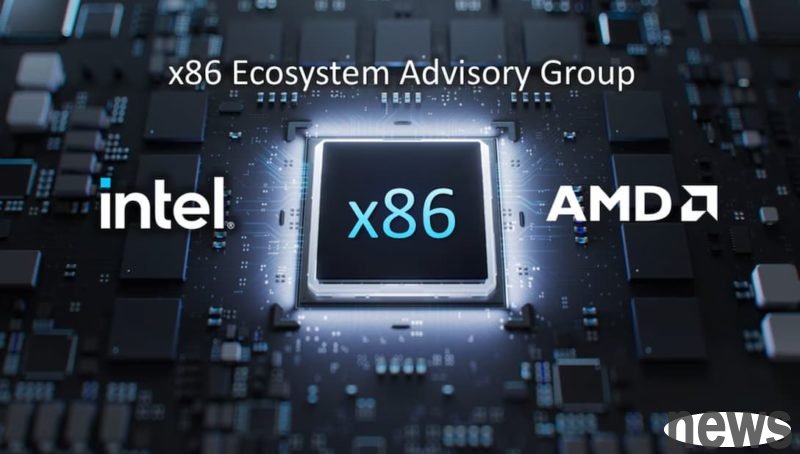Intel and AMD announced on the 13th that they have reached a number of technical milestones in cooperation with the "x86 Ecosystem Advisory Group" and will bring major improvements in performance, security and reliability in the future to...

Intel and AMD announced on the 13th that they have reached a number of technical milestones in cooperation with the "x86 Ecosystem Advisory Group" and will bring major improvements in performance, security and reliability in the future to ensure that x86 chips can maintain competitiveness under emerging architectures such as Arm.
Intel and AMD stated that the purpose of the organization is to strengthen the future of x86 computing and improve compatibility, predictability and consistency among various products using x86 processors, from handheld game consoles to supercomputers.
In the past year, the group has made significant progress on architectural and technical priorities to promote a stronger and more unified x86 ecosystem. Intel and AMD also share several milestones achieved in the cooperation.
First of all, one of the most critical technical milestones is the "FRED" (Flexible Return and Event Delivery) function, which will be a new interrupt model standard incorporated into future x86 processors, which can reduce system latency and improve the stability of system software, and make the system more efficient in multi-tasking operations and event response.
Next, Intel and AMD have also established AXV10 (Advanced Vector Extensions 10) as the next generation vector and general instruction set extension technology. This feature increases throughput while ensuring portability and consistency across client, workstation and server CPUs.
Third, the organization has also implemented AMX/ACE, whose full name is "Advanced Matrix Extensions for Matrix Multiplication", which can provide a consistent development experience across different devices such as laptops and servers, making it easier for developers to perform AI and matrix operations on various x86 platforms.
Finally, the unified memory tag specification ChkTag is launched to solve long-standing memory security vulnerabilities, such as the unified specification of buffer overflow (Buffer Overflow) and use of released memory (Use–After–Free, UAF) vulnerabilities. ChkTag uses a standardized command set to detect violations and protect the security of applications, operating systems, hypervisors and firmware.
Intel and AMD stated that with the support of compilers and tool chains, developers can gain more granular control without sacrificing performance. In addition, ChkTag-enabled software is compatible even with processors without hardware support, making it easy to deploy and complementary to existing security technologies such as Shadow Stack and Confidential Computing.
AMD and Intel Celebrate First Anniversary of x86 Ecosystem Advisory Group Driving the Future of x86 Computing Intel, AMD Detail x86 Improvements To Keep Their Chips Relevant Further reading: 2025 OCP Summit" emphasized the importance of open interconnection and announced joining the ESUN alliance! What important trends does AMD talk about?